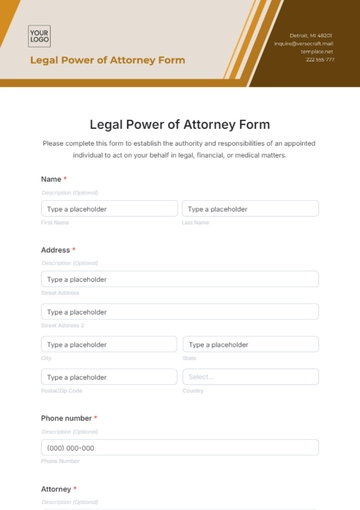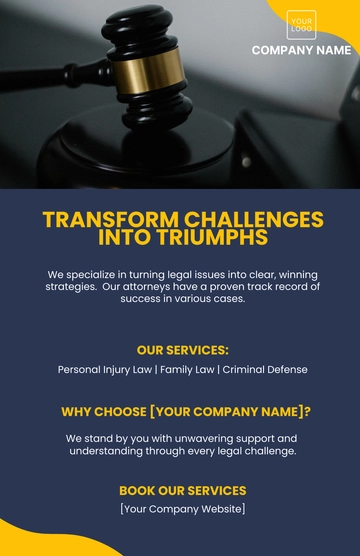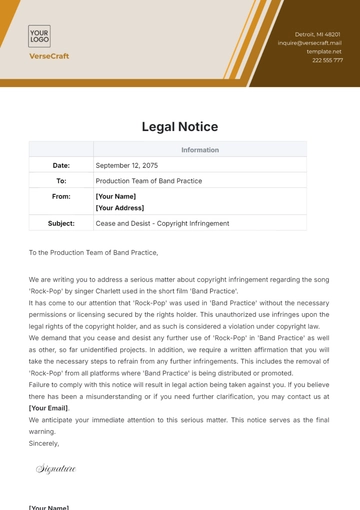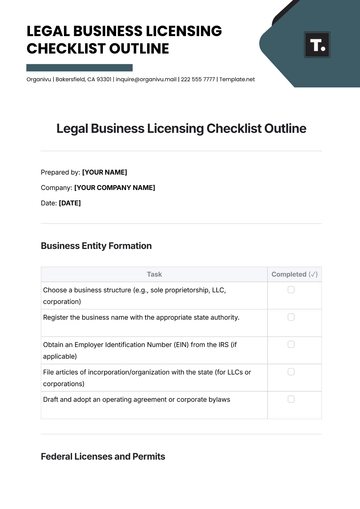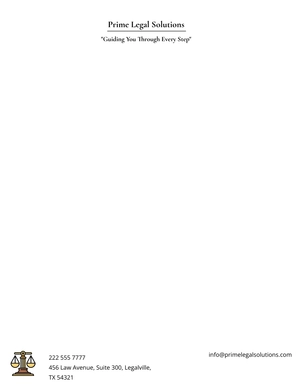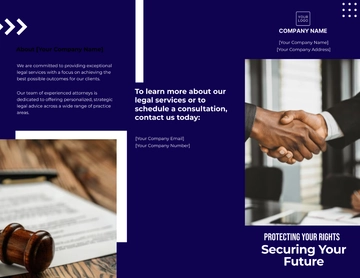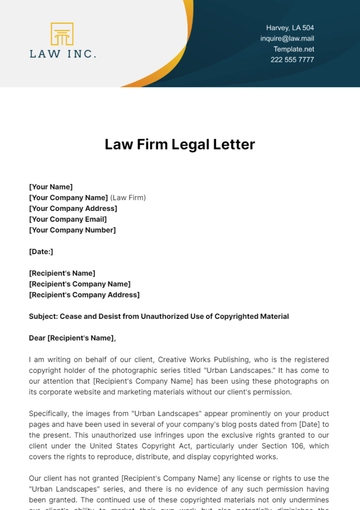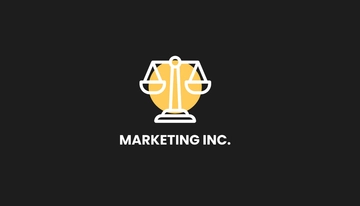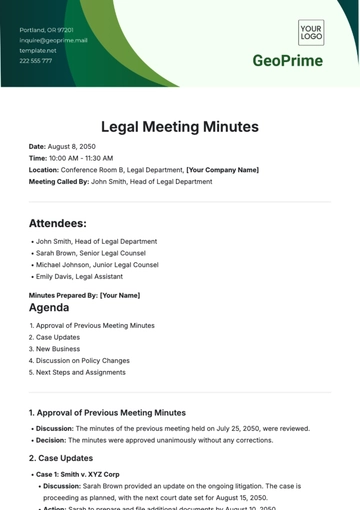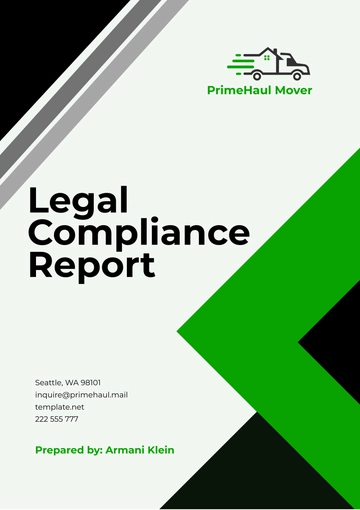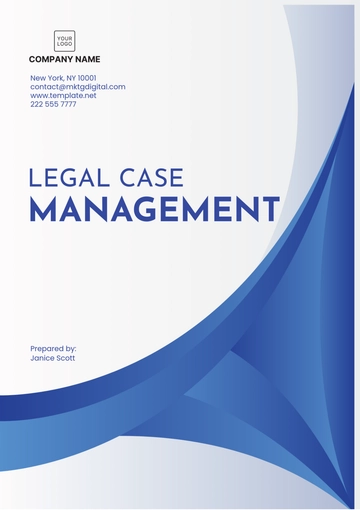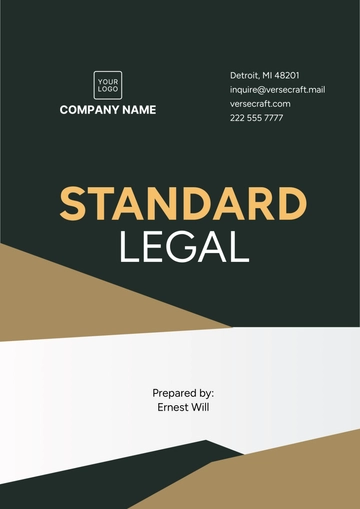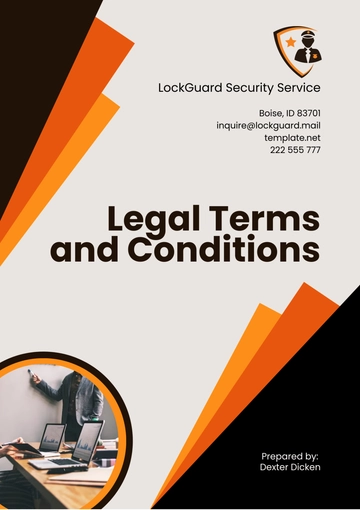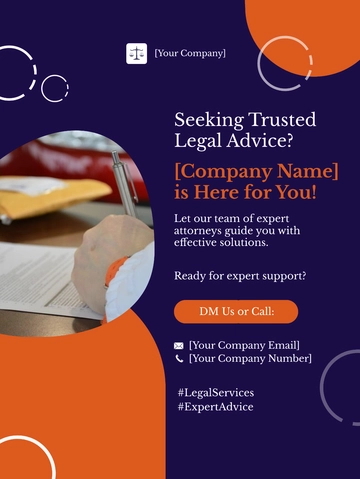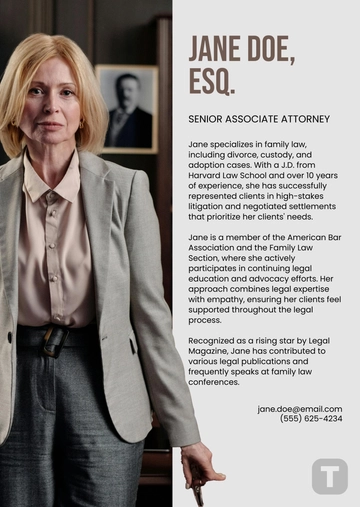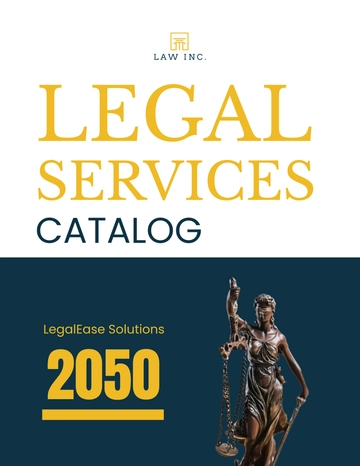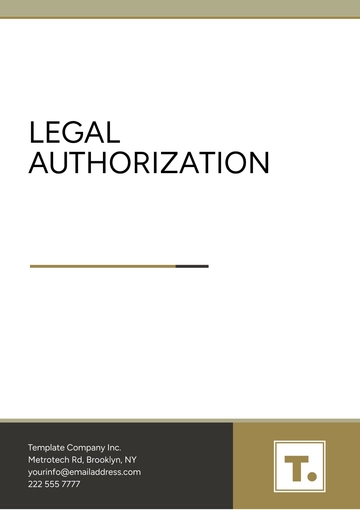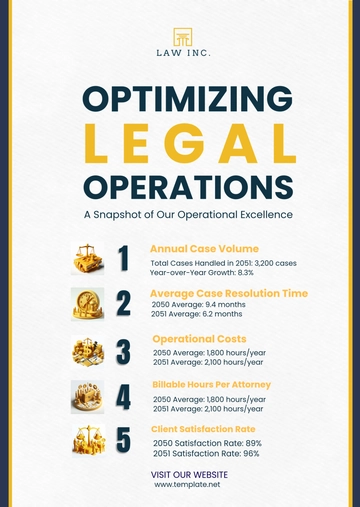Free Law Firm Client Service Excellence Strategy
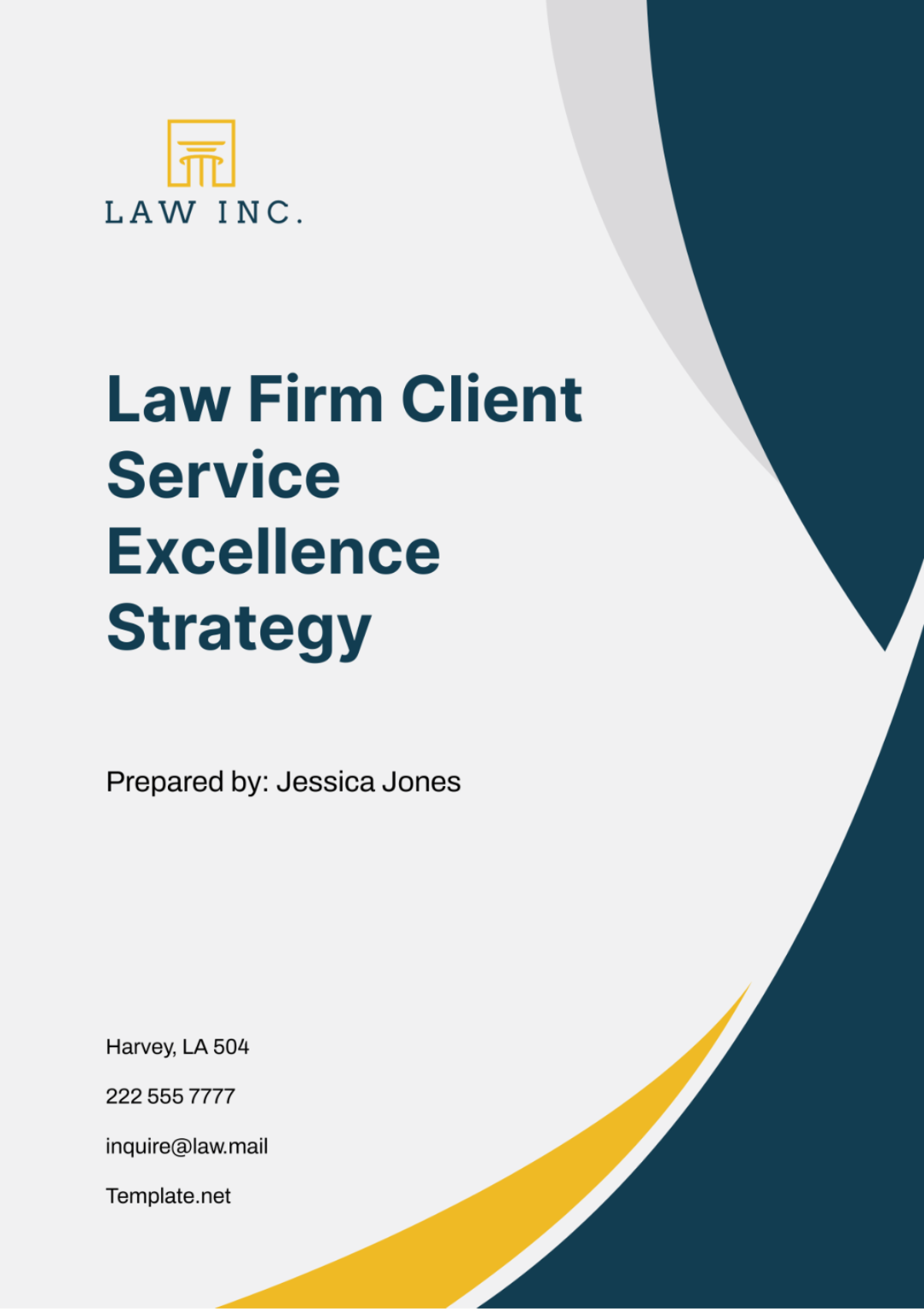
Our Law Firm Client Service Excellence Strategy sets the foundation for delivering unparalleled service, fostering strong client relationships, and driving sustainable success. Through proactive measures, robust feedback mechanisms, and a commitment to continuous improvement, we aim to elevate the standard of client service and redefine excellence in the legal industry.
1. Client Relations Strategy
At the heart of exceptional client service lies a meticulously crafted and executed client relations strategy. This comprehensive approach ensures that every interaction with clients is not only professional but also tailored to their unique needs and preferences. The table below outlines key components of our client relations strategy, aimed at fostering strong relationships, managing expectations, and continuously improving our services.
Component | Description | Implementation |
|---|---|---|
Identify and Categorize Client Needs | Conduct thorough assessments to identify and categorize the diverse needs and preferences of our clients. | Utilize intake forms, surveys, and interviews to gather information; categorize clients based on criteria such as industry, legal requirements, and communication preferences. |
Standardized Approach to Client Interactions | Develop and implement standardized procedures for handling client interactions, ensuring consistency and professionalism across all touchpoints. | Create client service protocols and scripts; train staff members on proper communication etiquette and service delivery standards. |
Feedback Systems for Continuous Improvement | Establish feedback mechanisms to solicit input from clients on their experiences with the firm and identify areas for improvement. | Implement regular client surveys, feedback forms, and post-engagement reviews; designate a dedicated feedback coordinator to analyze responses and recommend action steps. |
Effective Management of Client Expectations | Develop strategies to effectively manage and align client expectations with firm capabilities and legal outcomes. | Provide transparent communication about legal processes, timelines, and potential outcomes; set realistic expectations from the outset; offer proactive updates and progress reports. |
Understanding the Client's Journey | Gain insights into the client's journey through the firm, from initial consultation to case resolution, to enhance service delivery and address pain points. | Map out the client journey using journey mapping techniques; solicit feedback at key touchpoints to identify areas of friction and opportunities for improvement; implement changes to streamline the client experience. |
By diligently implementing these strategies, we not only enhance client satisfaction and loyalty but also solidify our reputation as a trusted legal partner committed to delivering excellence in service.
2. Streamlined Communication Process
Efficient and effective communication is fundamental to ensuring client satisfaction and fostering strong relationships. This section outlines key strategies for streamlining communication processes within the firm to enhance client experiences and uphold our commitment to exceptional service delivery.
Component | Description | Implementation |
|---|---|---|
Adopt Effective Communication Channels | Identify and utilize communication channels that best suit client preferences and needs. | Offer a range of communication options, including email, phone, video conferencing, and secure client portals. |
Client Communication Training for Staff | Provide comprehensive training to all staff members on effective communication techniques and client service principles. | Conduct workshops and role-playing exercises to enhance communication skills; emphasize active listening and empathy. |
Develop a Clear and Prompt Communication Protocol | Establish clear guidelines and protocols for client communication, including response times and escalation procedures. | Document communication protocols in a centralized handbook or guide; ensure all staff members are familiar with the procedures. |
Designate Communication Responsibilities | Assign specific communication roles and responsibilities to team members to ensure accountability and consistency. | Define roles such as primary contact, follow-up coordinator, and escalation point; clarify expectations for each role. |
Review and Improve Communication Methods Regularly | Regularly assess communication methods and practices to identify areas for improvement and implement necessary changes. | Conduct periodic evaluations of client feedback and communication metrics; solicit input from staff on potential enhancements. |
By implementing these strategies, we aim to establish a communication framework that prioritizes clarity, timeliness, and client-centricity. Through ongoing training, protocol refinement, and proactive evaluation, we ensure that communication processes remain agile and responsive to evolving client needs and expectations.
3. Application of CRM Software
Integrating a robust Customer Relationship Management (CRM) software is instrumental in optimizing client interactions and delivering personalized services. The following plan outlines key steps to effectively implement and leverage CRM software within our law firm to enhance client experiences and streamline internal processes.
Component | Description | Implementation |
|---|---|---|
Selecting a Tailored CRM System | Identify and invest in a CRM system that aligns with the unique needs and workflows of our law firm. | Conduct thorough research to evaluate CRM options; consider factors such as scalability, customization, and integration capabilities. |
Training Staff on CRM Usage | Provide comprehensive training to all staff members on the functionalities and best practices of the selected CRM. | Offer hands-on training sessions, online tutorials, and user manuals; designate CRM champions to provide ongoing support and guidance. |
Maintenance and Regular Updating | Ensure regular maintenance and updates of the CRM system to optimize performance and address any issues or bugs. | Establish a schedule for routine maintenance tasks, such as data backups and software updates; assign responsibility for system administration. |
Monitoring and Analysis of CRM Data | Utilize CRM data to gain insights into client preferences, behaviors, and engagement patterns for informed decision-making. | Implement data analytics tools to track key metrics and performance indicators; conduct regular reviews and analysis of CRM data. |
Consistent Review for Upgrades or Changes | Continuously evaluate the effectiveness of the CRM system and explore opportunities for enhancements or upgrades. | Solicit feedback from users to identify pain points and areas for improvement; stay informed about new features and updates from CRM vendors. |
By adhering to this plan, we aim to leverage CRM software as a strategic tool for enhancing client relationships, improving operational efficiency, and driving sustainable growth for our law firm. Through ongoing training, maintenance, and data-driven insights, we ensure that our CRM system remains a valuable asset in delivering exceptional client service.
4. Staff Training and Development Initiatives
Empowering our staff through comprehensive training and ongoing development initiatives is essential to delivering exceptional client service. The following strategies outline actionable steps to nurture talent, foster a culture of excellence, and drive continuous improvement within our firm.
Component | Description | Implementation |
|---|---|---|
Regular Client Service Training Workshops | Conduct regular training workshops focused on client service principles, communication skills, and best practices. | Schedule quarterly or biannual workshops; cover topics such as active listening, conflict resolution, and client empathy. |
Mentorship Program for Newer Staff Members | Pair newer staff members with experienced mentors to provide guidance, support, and professional development opportunities. | Assign mentors based on expertise and compatibility; establish regular check-ins and goal-setting sessions. |
Culture of Continuous Learning and Improvement | Foster a culture that values and encourages ongoing learning and professional growth among all staff members. | Provide access to online courses, seminars, and industry events; allocate time for self-directed learning and skill-building. |
Reward System for Outstanding Service | Recognize and reward staff members who consistently demonstrate exceptional client service and exceed performance expectations. | Establish a rewards program with incentives such as bonuses, awards, or public recognition; tie rewards to specific performance metrics. |
Performance Metrics Focused on Client Service | Establish performance metrics and key performance indicators (KPIs) that prioritize client satisfaction and service excellence. | Develop metrics such as client feedback scores, response times, and resolution rates; regularly review and assess performance against these metrics. |
By implementing these initiatives, we demonstrate our commitment to investing in our staff's professional development and fostering a client-centric culture that sets us apart as a leading provider of legal services. Through ongoing training, mentorship, recognition, and performance measurement, we ensure that our staff are equipped with the skills, knowledge, and motivation to deliver exceptional client service consistently.
5. Active Feedback Mechanisms
Continual improvement in client service hinges on our ability to actively solicit, analyze, and act upon feedback from our clients. The following strategies outline steps to establish robust feedback mechanisms and foster a culture of responsiveness and improvement within our firm.
Component | Description | Implementation |
|---|---|---|
Implementing Various Channels for Gathering Client Feedback | Offer multiple channels, such as surveys, feedback forms, and direct communication channels, for clients to provide feedback. | Utilize online survey tools, feedback forms on the website, and dedicated email addresses for feedback submissions. |
Establishing a System for Analyzing and Acting on Feedback | Develop a structured process for collecting, analyzing, and responding to client feedback in a timely manner. | Designate a feedback coordinator responsible for compiling and analyzing feedback; establish clear timelines for response and action. |
Directly Addressing Client Concerns and Suggestions | Ensure that all client concerns and suggestions are promptly acknowledged, addressed, and resolved to their satisfaction. | Implement a system for escalating and tracking client issues; assign dedicated staff members to handle client complaints and follow up on resolutions. |
Involvement of Senior Management in the Feedback Process | Demonstrate senior management's commitment to client feedback by actively participating in the feedback review and response process. | Hold regular meetings to discuss client feedback and improvement initiatives; empower senior management to make decisions based on client input. |
Seeking Feedback at Regular Intervals and After Significant Interactions | Solicit feedback from clients at key touchpoints throughout their journey with the firm, as well as after significant interactions or engagements. | Implement automated feedback requests following client meetings, case closures, and other milestones; conduct annual client satisfaction surveys. |
By implementing these mechanisms, we demonstrate our commitment to listening to our clients, addressing their concerns, and continuously improving our services. Through regular feedback collection, analysis, and action, we reinforce our dedication to delivering client-centric legal solutions and fostering long-term relationships built on trust and satisfaction.
6. Client Retention Strategy
Client retention is paramount in ensuring sustained success and growth for our firm. The following strategies outline proactive steps to foster client loyalty, satisfaction, and long-term relationships, ultimately contributing to our client service excellence strategy.
Component | Description | Implementation |
|---|---|---|
Implementing Programs Valuing Client Loyalty | Establish loyalty programs or initiatives that recognize and reward long-term clients for their continued partnership. | Offer benefits such as discounts, exclusive access to events, or personalized services for loyal clients. |
Ensuring Each Client Feels Appreciated and Understood | Personalize client interactions and communications to demonstrate genuine appreciation and understanding of their needs. | Assign dedicated relationship managers to key clients; tailor communication and service delivery to individual preferences. |
Developing Unique Value Propositions per Client Groups | Segment clients based on their needs, preferences, and characteristics, and tailor value propositions to address their specific requirements. | Conduct client segmentation analysis; develop customized service packages or offerings for each client segment. |
Consistently Updating Clients on Matters & Services Offered | Provide regular updates to clients on relevant legal matters, firm developments, and additional services that may be of interest to them. | Utilize email newsletters, client portals, and personalized communications to keep clients informed and engaged. |
Creating a Client Retention Analysis Model | Develop a systematic approach to analyze client retention metrics, identify trends, and implement targeted retention strategies. | Establish key performance indicators (KPIs) for client retention; conduct regular reviews and analysis of retention data. |
By implementing these strategies, we aim to cultivate strong client relationships, enhance client satisfaction, and maximize client lifetime value. Through personalized interactions, tailored value propositions, and proactive communication, we reinforce our commitment to delivering exceptional client service and fostering long-term loyalty and trust.
7. Developing Strong Client Relationships
Building and nurturing trust-based relationships with our clients is foundational to our client service excellence strategy. The following actions outline key steps to cultivate strong and enduring connections with our clients, fostering loyalty and generating referrals.
Component | Description | Implementation |
|---|---|---|
Creating Personalized Strategies for Key Clients | Develop tailored strategies and service offerings for key clients based on their unique needs, goals, and preferences. | Conduct client portfolio analysis; assign dedicated account managers to key clients to oversee personalized service delivery. |
Organizing Regular Face-to-Face Meetings | Prioritize face-to-face interactions whenever possible to deepen relationships, strengthen rapport, and enhance trust. | Schedule regular meetings with key clients, either in-person or via video conferencing, to discuss matters and provide updates. |
Providing Regular Updates and Information to Clients | Keep clients informed and engaged by providing timely updates on relevant legal developments, firm news, and industry insights. | Establish a communication cadence for client updates via email newsletters, client portals, and personalized communications. |
Ensuring Transparency in All Dealings with Clients | Foster transparency and integrity in all client interactions, ensuring open and honest communication throughout the engagement process. | Clearly communicate fees, timelines, and expectations; promptly address any concerns or questions raised by clients. |
Encouraging Staff to Build Personal Connections | Empower staff members to cultivate personal connections with clients by demonstrating empathy, active listening, and genuine interest. | Encourage staff to engage in casual conversations and inquire about clients' interests, hobbies, and personal milestones. |
By prioritizing personalized service, regular communication, transparency, and genuine connections, we demonstrate our commitment to building enduring client relationships grounded in trust, respect, and mutual understanding. Through these efforts, we aim to not only meet but exceed our clients' expectations, becoming trusted advisors and valued partners in their legal journeys.
8. Service Standards
Setting and maintaining high service standards is pivotal in leaving a lasting impression on clients and cultivating a strong brand identity. The following steps outline how we establish, communicate, monitor, and enforce service standards to ensure consistent excellence in client service delivery.
Component | Description | Implementation |
|---|---|---|
Establishing Measurable Service Standards | Define clear and measurable service standards that align with client expectations and firm values. | Develop service level agreements (SLAs) outlining specific service metrics, response times, and quality benchmarks. |
Consistently Conveying These Standards to Staff | Clearly communicate service standards to all staff members through training, manuals, and internal communications. | Incorporate service standards into employee onboarding programs; provide ongoing training and reinforcement. |
Monitoring Compliance with Service Standards | Implement systems and processes to monitor adherence to service standards and track performance metrics. | Utilize performance management tools, client feedback surveys, and quality assurance checks to assess compliance. |
Implementing Stringent Actions Against Non-Compliance | Enforce accountability by establishing consequences for non-compliance with service standards. | Develop disciplinary procedures and performance improvement plans for staff members failing to meet service expectations. |
Regularly Reviewing Standards for Possible Improvements | Continuously evaluate service standards to identify areas for enhancement and adaptation to evolving client needs. | Conduct regular reviews of SLAs and client feedback data; solicit input from staff and clients on potential improvements. |
By rigorously adhering to these steps, we ensure that our service standards remain not just benchmarks but driving forces behind our commitment to excellence in client service. Through continuous monitoring, enforcement, and refinement, we uphold our reputation as a trusted partner and deliver unparalleled value to our clients.
9. Proactive Approach
Proactively anticipating and addressing client concerns is integral to delivering outstanding service. This plan outlines actionable strategies to anticipate, mitigate, and resolve client issues swiftly and effectively, ensuring client satisfaction and loyalty.
Component | Description | Implementation |
|---|---|---|
Develop Regular Check-in Methods with Clients | Schedule regular check-in meetings or calls with clients to gather feedback, address concerns, and assess satisfaction levels. | Establish a calendar for recurring client check-ins; assign dedicated account managers to facilitate communication and relationship-building. |
Predict Possible Service or Communication Breakdowns | Anticipate potential points of friction or miscommunication in client interactions and develop preemptive strategies to address them. | Conduct risk assessments to identify potential service or communication breakdowns; establish contingency plans and protocols. |
Establish a Quick Response System for Client Issues | Implement a streamlined process for clients to report issues or concerns and ensure prompt resolution by designated staff members. | Set up a dedicated client support hotline or email address; establish response time targets and escalation procedures for urgent issues. |
Cultivate a Client-First Mentality Among Staff | Foster a culture that prioritizes the needs and concerns of clients above all else, empowering staff to go above and beyond to exceed client expectations. | Lead by example; recognize and reward staff members who demonstrate exceptional client-centric behavior; provide training on empathy and active listening. |
Proactively Suggest Solutions Tailored to Client’s Needs | Take a proactive approach to problem-solving by identifying potential challenges and offering tailored solutions before clients even raise them. | Conduct regular client needs assessments; provide proactive recommendations based on client goals, preferences, and industry trends. |
By implementing these proactive strategies, we demonstrate our commitment to delivering exceptional client service and fostering long-term relationships built on trust, reliability, and responsiveness. Through regular communication, anticipation of client needs, and swift resolution of issues, we reinforce our position as a trusted advisor and partner in our clients' success.
10. Measuring Success
Effective measurement and tracking mechanisms are essential for evaluating the effectiveness of our client service excellence strategy. The following steps outline how we can implement robust measurement and tracking processes to gauge success and drive continuous improvement.
Component | Description | Implementation |
|---|---|---|
Create Measurable Key Performance Indicators (KPIs) | Define clear and quantifiable KPIs that align with our strategic objectives and reflect key aspects of client service excellence. | Identify KPIs such as client satisfaction scores, retention rates, response times, and referral rates; establish targets for each KPI. |
Set Regular Evaluation Periods for These KPIs | Schedule regular evaluation periods to assess progress against KPIs, identify trends, and measure the impact of our client service initiatives. | Conduct quarterly or biannual reviews of KPI performance; compare actual results against targets and benchmarks. |
Share Results with the Entire Team for Transparency | Foster a culture of transparency and accountability by sharing KPI results and performance insights with the entire team. | Hold team meetings or distribute reports to communicate KPI results; celebrate successes and discuss areas for improvement. |
Regulate Adjustments to the Strategy Based on Measured Performance | Use KPI data to inform strategic decision-making and make adjustments to our client service excellence strategy as needed. | Conduct root cause analysis for any performance gaps identified; implement corrective actions and enhancements accordingly. |
Engage in Comparative Analysis for Continuous Improvements | Benchmark our performance against industry standards and competitors to identify opportunities for differentiation and improvement. | Conduct regular benchmarking studies and market analyses; identify best practices and innovative approaches to incorporate into our strategy. |
By implementing these measurement and tracking processes, we can gain valuable insights into the effectiveness of our client service initiatives and make data-driven decisions to optimize our approach. Through regular evaluation, transparency, and continuous improvement, we ensure that our client service excellence strategy remains dynamic, responsive, and aligned with the evolving needs and expectations of our clients.
11. Conclusion: Elevating Client Service Excellence
In today's competitive legal landscape, client service excellence isn't just a goal—it's a necessity. Our Law Firm Client Service Excellence Strategy is designed to elevate our firm's commitment to delivering unparalleled service, fostering strong client relationships, and driving sustainable success.
Through proactive measures such as regular client check-ins, personalized communication, and a client-first mentality among our staff, we demonstrate our dedication to anticipating and addressing client needs before they arise. By implementing robust feedback mechanisms, embracing CRM technology, and investing in staff training and development, we ensure that our service standards remain unwaveringly high and continuously evolve to meet the ever-changing demands of our clients.
Central to our strategy is a commitment to measurement and accountability. By establishing clear KPIs, conducting regular evaluations, and sharing results transparently with our team, we foster a culture of continuous improvement and innovation. Through comparative analysis and strategic adjustments based on measured performance, we position ourselves not just as legal advisors, but as trusted partners in our clients' success.
As we embark on this journey towards client service excellence, let us remain steadfast in our commitment to exceeding expectations, building lasting relationships, and making a meaningful difference in the lives of our clients. Together, we will continue to elevate the standard of client service in the legal industry and reinforce our position as a trusted ally and advocate for those we serve.
- 100% Customizable, free editor
- Access 1 Million+ Templates, photo’s & graphics
- Download or share as a template
- Click and replace photos, graphics, text, backgrounds
- Resize, crop, AI write & more
- Access advanced editor
Elevate your law firm's client service strategy with this meticulously curated template from Template.net. Our Law Firm Client Service Excellence Strategy Template is both editable and customizable, allowing you to adapt it seamlessly to your specific needs. With the added benefit of being editable in our Ai Editor Tool, this resource empowers professionals to establish a robust, client-focused strategy. Harness our comprehensive template to strategically drive your firm's client service excellence to new heights.
